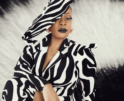
The Ethnographic Study: An Anthropological Approach for Consumer Insight
Observation isn’t just for the anthropologists and sociologists of the world anymore. Immersing oneself in another society or place to uncover and explain human behavior can be used for far more than the academic documentation of remote cultures or the validation of social policy. Indeed, ethnographic studies can be and are being used to analyze consumer behavior, critique product performance and inform business decisions in the 21st century. Unlike a project with a quantitative research design (which relies on the self-reported honesty of respondents to reach conclusions), an ethnographic study in a market research setting makes use of objective observation to reveal insight. Take a look at four ways you can modify the traditional ethnographic study to conduct observational market research:
Researcher Observes Subjects in Field While Hidden from View
In theory, this might seem like the best way to observe consumers. After all, aren’t we all more relaxed and genuine without an audience? However, watching someone from afar can raise ethical questions regarding whether it’s right or even lawful to use data from or observe someone without his or her permission. Make sure to check applicable codes of conduct within your industry and verify GDPR (General Data Protection Regulation) laws, especially before you begin watching subjects remotely or tracking their online movements.
Researcher Openly Observes Subjects in Field
Frequently, researchers like to passively (but openly) observe their subjects as they live and work. Watching people as they buy and use (or not buy and not use) a particular product can give insight into how they search for, find and apply a product in everyday life. The Neilson Ratings System is one specific example of this type of research.
Researcher Openly Interacts with Subjects in Field
This technique is most like anthropological studies you may have read about in school. A researcher enters a small community and interacts with its inhabitants, witnessing firsthand the ways in which they act and think and use objects so that they can better understand how those people occupy and interpret the world around them. Market researchers might interact with consumers in a store or restaurant, watching their actions and asking them to clarify any confusing or unusual behaviors. It’s similar to conducting a focus group but takes place on location rather than in an offsite focus group setting.
Researchers Interacts Anonymously with Subjects in Field
Sometimes, companies like to employ an even more stealth approach to their research methods with the hope that going undercover will remove unknown biases and unwitting coercion, thus limiting forced responses and bad data. Mystery shopping is one such example, but like anonymous observation, hiding your true intent as you interact with respondents could possibly cause them to distrust you in the future should they ever find out.
Whatever method you choose to conduct your ethnographic market research, the point remains the same: to gain insight into how consumers interact with and use products so that you can design ones that are practical and manageable and that appeal to specific populations.
Recommended
-
One Rx For Employee Community ...April 19th, 2023
-
Meet Miss Atilla, Founder And ...October 31st, 2022
-
The Business Of The Big Apple:...August 17th, 2021
-
CRM Software For BeginnersMarch 26th, 2021
-
Turning “Imagine” Into Act...March 17th, 2021















